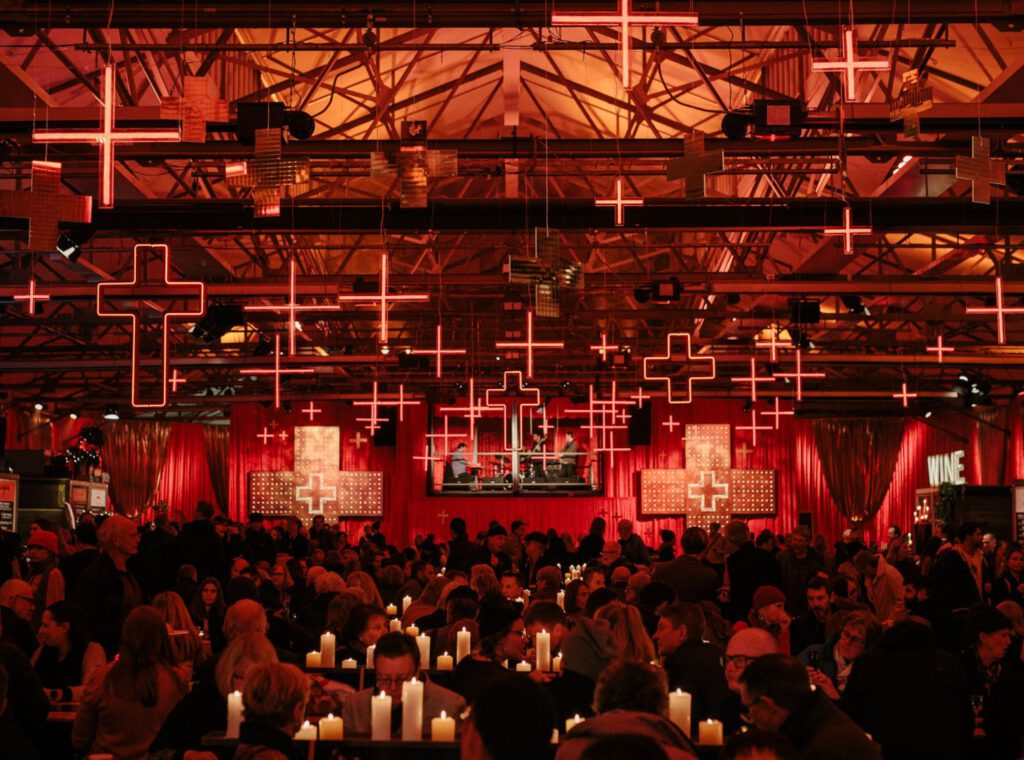Politicians want to resurrect the fortunes of CBD cafes, film studios are resurrecting old movie franchises, and we’re all doing our best to revive flagging spirits after two years (at least?) of bad news. And here we are at Easter weekend, the resurrection story: Jesus crucified and buried on Good Friday, raised from the dead come Easter Sunday.
Of course, we fudge Easter celebrations a bit here in the southern hemisphere. Instead of fluffy ducklings and green shoots heralding new life: winter is coming. Australia’s first Deltacron cases have been confirmed, we’re bracing ourselves for a potentially ugly election campaign, and the world order isn’t exactly looking stable right now. Resurrection 2022 is off to a rocky start.
Still, those green shoots take root in the unlikeliest places. In the depths of the Tasmanian winter, the annual Dark Mofo festival defiantly celebrates the darkness. This year’s theme, though? You guessed it — resurrection.

‘Nature is constantly moving toward death, and resurrection,’ reads the curatorial statement, released last week. ‘As the world re-emerges from the Covid lockdowns, we are all experiencing a rebirth of sorts. The forced isolation gave rise to a re-evaluation of what matters, to new ideas, new dreams.’
Creative director Leigh Carmichael explains that the darkness offers ‘a rich vein of inspiration … it’s associated with the subconscious, and being underwater — there’s all these beautiful metaphors that are linked with the darkness.’ But Dark Mofo, he tells me, also explores the flip side: ‘The moment of the solstice has always been linked with new life and the birth of the new year.’
While Dark Mofo and the churches have found themselves at odds on some counts, this light-shining-in-the-darkness motif is textbook Easter. The night is darkest just before the dawn. Before Sunday’s glorious resurrection comes the holy horror of Good Friday. The prelude — the prerequisite, even — to new life is a crucifixion.
Also on theme here is the new Matrix film: The Matrix Resurrections, released at the end of last year after a hiatus for the franchise of nearly twenty years. It’s been a long Easter Saturday for Keanu Reeves’ character Neo, who in the conclusion of the trilogy in 2003 submitted to his own form of crucifixion, sacrificing his life to save humanity from destruction by their enemy, the machines.
This rebirth of the world of The Matrix is slick and thoughtful and (perhaps surprisingly) extremely enjoyable. It makes fun of itself for being a reboot, and revels in self-referential detail — a café called Simulatte, a cat called Deja Vu. But in the context of Neo’s ‘resurrection’, it also re-opens some of the questions that made the original film a classic: what is really real? If life is to continue, at what cost, and to what end?
‘I know you said the story was over for you,’ one character says to Neo. ‘But that’s the thing about stories … they never really end, do they? We’re still telling the same stories we’ve always told.’
Easter speaks to the same yearnings for renewal that Dark Mofo and The Matrix Resurrections are tapping into … that in spite of appearances, the best may be yet to come.
This Easter weekend, in churches around the country and all over our fractious world, people will re-tell the story of a first-century Jewish man who was misunderstood and despised, and brutally killed for it, and whose tomb was found empty on the third day. They will proclaim his death and resurrection as an invitation to everyone to new life, to rebirth.
Easter speaks to the same yearnings for renewal that Dark Mofo and The Matrix Resurrections are tapping into, the same intuition that there’s more to the story. That in spite of appearances, the best may be yet to come.
Without giving too many spoilers, what’s most interesting to me about The Matrix as reloaded for 2022 is that it’s actually, essentially, a love story. In this, too, it’s like the archetypal death-and-resurrection story.
‘I don’t identify as Christian but I do understand the mythology and it resonates really deeply with me,’ says Leigh Carmichael. ‘I’m most interested in Jesus as a symbol of dying and paying the ultimate sacrifice for the hope of new life and rebirth … how he embraced the suffering and sorrows of the world, and said yes to them.’
Resurrection is not resuscitation: it doesn’t just restore the status quo. What many of us are longing for, in 2022, is a love that says yes to our pain, and carries us beyond it to something genuinely new.
Natasha Moore is a Senior Research Fellow at the Centre for Public Christianity and the author of The Pleasures of Pessimism.
This article first appeared at Eureka Street.